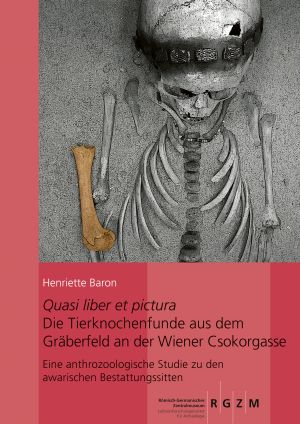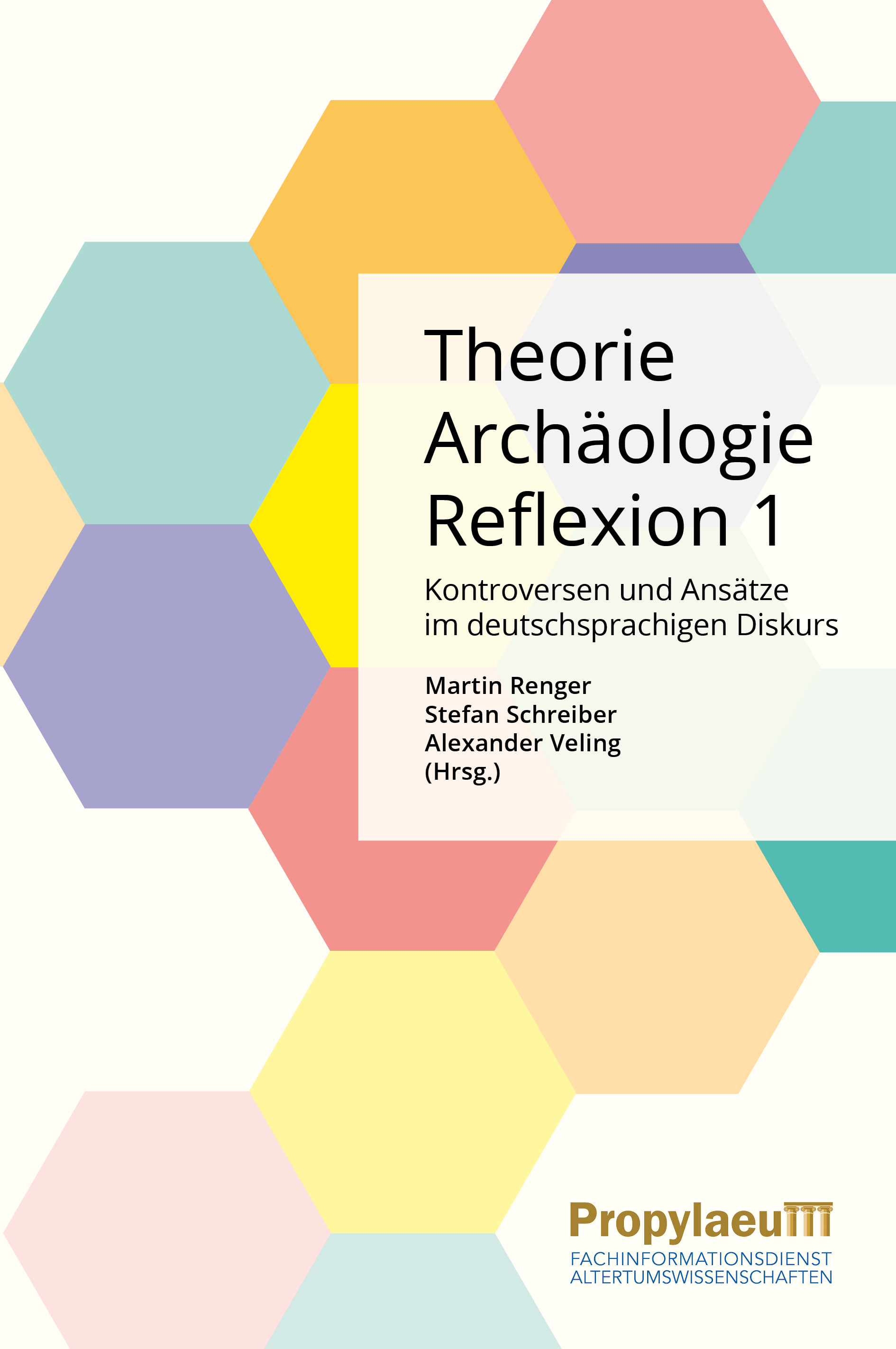Baron, Henriette
Quasi Liber et Pictura: Die Tierknochenfunde aus dem Gräberfeld an der Wiener Csokorgasse – eine anthrozoologische Studie zu den awarischen Bestattungssitten
Tierknochen in awarischen Gräberfeldern werden häufig als Speisebeigaben für die Toten oder unspezifisch als „Opfer“ gedeutet. Aber warum wählten die Awaren ganz bestimmte Tiere und Tierteile aus, um sie ihren Toten in das Grab zu legen?
Henriette Baron legt die Tierknochenfunde aus dem awarischen Gräberfeld an der Wiener Csokorgasse vor, analysiert die Beigabepraxis und gibt einen detaillierten Überblick zu awarischen Tierresten des 7. und 8. Jahrhunderts – mit dem Ziel, neue Erkenntnisse darüber zu gewinnen, was die Menschen eigentlich in den Tieren sahen. Dabei wird klar: Die Interpretation als Speisebeigaben greift bisweilen zu kurz; die ausgewählten Tiere und Tierteile trugen tiefere Bedeutungen. Zudem zeichnet sich über wenige Generationen ein Wandel der Beigabensitte ab, der sich mit grundlegenden gesellschaftlichen Veränderungen in Zusammenhang bringen lässt.
Wenn man genau hinguckt, sind Tiere „wie ein Buch und ein Gemälde“ – „quasi liber et pictura“ – ein Spiegel unseres Seins, wie Alain de Lille es im 12. Jahrhundert schrieb.
A Most Pleasant Scene and an Inexhaustible Resource Steps Towards a Byzantine Environmental History: Interdisciplinary Conference November 17th and 18th 2011 in Mainz
Was wissen wir über die Umwelten, in denen sich das Byzantinische Reich im östlichen Mittelmeerraum entfaltete? Wie wurden sie wahrgenommen und wie prägten sich Mensch und Umwelt im Laufe des byzantinischen Jahrtausends (395-1453 n. Chr.) gegenseitig? Welche Zugangswege wurden bisher erprobt, um diese Wechselwirkungen zu ergründen? Und wie könnte eine weitere umweltgeschichtliche Forschungsagenda aussehen?
Diese Fragen standen im Zentrum einer interdisziplinären Tagung, die am 17. und 18. November 2011 in Mainz stattfand. Dieser Tagungsband versammelt Beiträge von Forschern, die sich diesen Fragen von ganz unterschiedlichen Blickwinkeln genähert haben. Sie richten ihr Augenmerk auf das Aussagepotenzial traditioneller wie auch »neuer« Quellen und Methoden der Byzantinistik und Byzantinischen Archäologie für diese bislang noch wenig ergründete Sphäre. Dabei wird sichtbar, wie eng die Umweltgeschichte mit klassischen Themen der Byzanzforschung – seien sie wirtschafts-, sozial- oder kulturgeschichtlicher Natur – verwoben ist.
Theorie | Archäologie | Reflexion 1: Kontroversen und Ansätze im deutschsprachigen Diskurs
Der Doppelband „Theorie | Archäologie | Reflexion. Kontroversen und Ansätze im deutschsprachigen Diskurs“ widmet sich der Diversität an Zugängen, die den archäologischen Theoriediskurs heute und in naher Zukunft prägen. Dazu versammelt er wegweisende Beiträge, spannende Gedankenexperimente und erste theoretische Annäherungen quer durch das archäologische Fächerspektrum. Dabei kommen sowohl etablierte als auch Nachwuchswissenschaftler*innen zu Wort, um neue Impulse und Ansätze in den Diskurs einzuspeisen oder bestehende Zugänge zu diskutieren. Die Beiträge in Band 1 fokussieren auf die Fachbestimmungen und disziplinären Verortungen, auf die Standpunkte und Positionierungen sowie auf Fragen der Ethik und Verantwortung der Archäologien.









